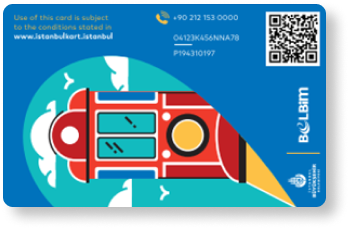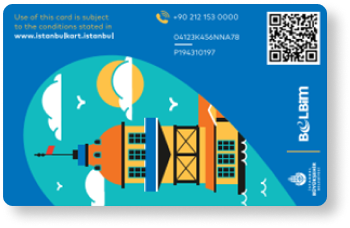
Zelve Valley Cappadocia Open Air Museum
Cappadocia is an amazing place full of wonders. Things to do in Cappadocia are countless but for this article, we will be looking for one of the most amazing ones: Zelve Open Air Museum. One of Cappadocia's most well-known outdoor museum places is Zelve Valley, which is situated close to Pasabag Monks Valley between Avanos and Goreme. One of the most famous sights in Cappadocia and a UNESCO World Heritage Site is Zelve Valley Open Air Museum, where tourists may see pointed, comprehensive, and sharp fairy chimneys.
Before we dig into the details, let’s have a look at the best way to experience Cappadocia: Cappadocia Travel Pass®. This special pass offers you access to 35+ amazing attractions, basically all you need to have an amazing Cappadocia experience. Special discounts, free entrances, and more… Cappadocia Travel Pass® is a sightseeing pass created with a great love for Cappadocia and a deep passion for tourism. Did you know that we also have a sister pass Istanbul Tourist Pass® which is also created by long years of experience? From Istanbul to Cappadocia, we are here for you every step of the way.
About Zelve Open Air Museum
Zelve Valley is a wide valley with a sizable cave community once living there. The little region, which features fifteen cave churches from the Byzantine era, was a Turkish settlement up until 1960. Nowadays, Zelve Valley is an amazing open-air museum. Between Avanos and Goreme, next to Pasabag Monks Valley, Zelve Valley is one of Cappadocia's most well-known open-air museum locations. The Zelve Valley Open Air Museum, which is part of a UNESCO World Heritage Site, is one of the most well-known attractions in Cappadocia and offers visitors the chance to observe vast and sharply pointed fairy chimneys.
Many medieval structures can be found in the Zelve Valley, which is known for its imposing fairy chimneys. Humans have carved churches, monasteries, and homes in caves. You might think about going on a hike across the rocky portions of the valley if you visit the Zelve Open Air Museum.
Zelve is a wonderful place to visit. The main churches are accessible via lovely walking pathways. The 2-kilometer hike through the Y-shaped valley provides opportunities to discover several cave rooms and take in Cappadocia's breathtaking scenery. The two ravines are lined with picturesque cones and captivating caverns. The rooms may be seen in cross-section from the fallen stones.
The Zelve churches are not as well conserved as the Göreme Open Air Museum, which results in significantly fewer visitors. This implies that it may be much more enjoyable if you don’t like crowds around. You might have the museum to yourself if you go early in the day. The greatest time to go is in the spring when the flowers are in bloom and the birds are flying high.
History of Zelve Valley Open Air Museum
Zelve was a town during the Byzantine era. The earliest churches were built around 500. There aren't many churches from the sixth century in Cappadocia, but half of them are in Zelve. The architectural style is our only indicator of a date for Zelve because we don't have any records or outside history about it. Although there isn't a lot of concrete evidence to support this, historians believe that the Zelve was a small troglodyte town since the Byzantine era based on the architecture of the cave shelters and what is still standing. In the fourth and fifth centuries, Greek-speaking Romans converted Zelve to Christianity. The Roman/Byzantine name of the location is uncertain. This little community didn't become religiously significant until the ninth and thirteenth centuries when the first seminaries for priests were founded there.
It is difficult to pinpoint the purpose and makeup of the Byzantine community. Several rooms have been used differently over the course of the site's lengthy history, and numerous spaces have fallen apart. There aren't many formed places outside of the churches. As there are no grand halls or courtyard homes in the area, there is little indication of a wealthy social class. Refectories and monks' cells that would indicate a monastic role are no longer present. The majority of rooms are basic and practical; they lack any architectural components or layout. Zelve Valley may have been a straightforward agricultural village based on the numerous dovecotes and winepresses. They farmed the fields at the valley's opening for food.
For a long time, Zelve served as a safe haven from Arab and Persian assaults. This little village became a Muslim village during the Ottoman Empire after the Byzantine era. Zelve was a Turkish village in the Ottoman empire after the Byzantine era. The cut places were passed down to be extended by the community. The Turks even constructed a unique mosque with rock carvings and a large cemetery. They left the majority of the churches alone, although they did transform some of them into agricultural areas. Yet, the remnants of churches and a mosque with a dome in a rock-cut reveal that Zelve was a site where Christians and Muslims lived side by side in peace.
The families of Zelve relocated in the 1950s to Aktepe, a newly constructed community 1 km to the northeast. For human habitation, the tumbling rock and collapsing chambers had become too unsafe. When a rock fell and crushed an eleven-year-old girl, it became the breaking point. The Turkish government helped with the construction of traditional residences after the community elders chose to evacuate the locals.
After this incident, Zelve was recognized as a UNESCO World Heritage Site and an official open-air museum in the 1960s. The official account of Zelve was exoticized to increase its attraction and attract more tourists—this was an old monastery community with monks climbing through cave openings. Old Zelve is now a deserted town, and erosion is constantly happening. Rock climbers will find paradise in the Zelve open-air museum's three valleys. A competent hiker can traverse these valleys in at least two hours, and they also contain the earliest instances of Cappadocian architecture and religious artwork.
Visiting Zelve Open Air Museum
First things first, you can visit this amazing place for free with Cappadocia Travel Pass® and you’ll definitely love it! What to do and what to see in Zelve Open Air Museum? Let’s have a look.
We suggest visiting the first valley on the right, collecting the stamps in the second valley, and turning right to begin your exploration of this magnificent location. As you proceed along the path, you will notice several rock surface artworks on your right. These frescoes are all that is left of the Geyikli Kilise, which has since completely fallen. They provide examples of some of the earliest paintings showcasing key Christian symbols like the Cross, the deer, and the fish. As you enter the first valley, a mosque with a beautiful minaret carved out of rock will be on your left. Next, on your right, you will see a monastery complex that resembles an upside-down bowl cut out of the rock. A metal staircase leads up to a complex of rock carvings just across from it, which is connected to the second valley by a protracted tunnel that resembles a cave.
Although erosion is still eating away at the valley structures and some parts are closed off due to rock falls, a great walking trail circles around the valleys and provide access to the many caves.
Walking or hiking among the fairy chimneys is one of the best things to do in Zelve Valley for taking in the natural beauty and distinctive features. If you want to literally tour the valley, you'll need at least 3–4 hours. Three valleys make up the valley. The first one has a mosque carved out of rock. You can find abandoned residential quarters in the second valley. The old rock-cut towns and churches can be found in the third valley. The spectacular fountain that greets you as you approach the valley's entrance will enchant you. In the valley, there are a total of 15 churches, let’s have a look at them.
Zelve is home to fifteen Byzantine-era cave churches, but half of them are in disrepair. The rock-relief carvings cut into the side walls of the numerous churches from the sixth century are noteworthy. Nonetheless, the majority of the churches in Zelve were constructed between the ninth and eleventh century, around the same time as other Cappadocian churches. All of the churches are older than AD 1100. As a result, there is no evidence from the architecture that Byzantine Christians and Ottoman Muslims coexisted in the settlement.
The churches at Zelve share a number of characteristics. The churches at Zelve differ from other Cappadocian churches in that they have fewer graves, indicating that they were not funerary chapels; split naves with different decorations in each segment; fewer multi-color icons painted on plaster; instead, they are primarily decorated with rock-cut and ochre-painted crosses; and an early, frequently sixth-century date.
You can get there by taxi or rent a car. There are also public buses and dolmus goes there. Unfortunately, Zelve is still not a very popular place, so there are not many transportation options. But once you have a car or take a taxi, it is easy to get there. Zelve Open Air Museum is open every day from 8.00 AM to 17.00 PM but as we mentioned earlier, it is best to visit Zelve in the mornings.
FAQ
Are there other open-air museums other than Goreme Open Air Museum?
Yes, the Cappadocia region can be an open-air museum itself but if you mean a real museum, then don’t miss out Zelve Valley Open Air Museum.
Is Zelve Open-Air Museum different from Goreme Open-Air Museum?
The Goreme Open Air Museum, which is a comparable but distinct museum next to Goreme, frequently casts a shadow over the Zelve Open Air Museum. Both of these locations are among the greatest in Cappadocia, but how do they vary and which one should you choose if you only have a limited amount of time?
The fundamental distinction between the two is that Goreme Open Air Museum was primarily a monastic colony, whilst Zelve Open Air Museum was formerly both a monastery and a small inhabited town. Amazing rock-cut cave houses can be found in Zelve Valley, however, there aren't many religious frescoes there. Many old churches that were carved out of fairy chimneys can be found all across the Goreme Open Air Museum, many of which have religious murals painted on their walls.
Although they can appear to be extremely similar at first glance, the two museums really highlight various facets of Cappadocia's history. Make sure both attractions are included on your Cappadocia trip if you have the time.
Is it free to enter Zelve Open Air Museum?
No, since it is a museum there is an entrance fee. By 2023, the entrance fee is 65 TL, but don’t forget if you have a Cappadocia Travel Pass® it is free for you since it is included in the pass along with 35+ amazing attractions. Goreme Open-Air Museum is also free with your pass.




 Travel around Istanbul freely
with Public Transportation Card
Travel around Istanbul freely
with Public Transportation Card
Buy your unlimited Istanbul Public Transportation Card now. We deliver it your hotel before you arrive.





Latest Posts

Why Should You Visit Cappadocia? Updated for 2023
Have you ever wondered where all those lovely photographs of a valley seen from a hot air balloon originate from? Cappadocia, tucked right in the heart of Turkey's Anatolia region, is one of the country's tourism centers, despite its tiny size. And w...

Cappadocia: Hot Air Balloon Flight Guide 2023
Have you ever wondered what it feels like to fly? To float among the birds in the sky and enjoy a bird’s eye view of the gorgeous surroundings around you? Hot air balloons in Cappadocia, Turkey provide just that and more – all the while delivering an...

Underground Cities of Cappadocia
The ancient underground cities of Cappadocia may strike the interest of even the most claustrophobic person! Every year tens of thousands of tourists around the world visit Cappadocia to discover these mysterious caves and learn about their history. ...

How far is Cappadocia from Istanbul?
The distance between Cappadocia and Istanbul is around 730 km (454 miles). This may seem like a lot but think about all the adventures you will experience once you arrive! Furthermore, there are many ways to get there and you will surely find one tha...

Top Things to Do in Cappadocia
Wondering about things to do in Cappadocia? Trying to arrange your trip but there are many question marks. Cappadocia Travel Pass® provides over 25 attractions, with just one pass – so book yours NOW! Here is a list of the main must-do activities but...

The Top 20 Amazing Cave Hotels in Cappadocia
Looking for a unique, one-of-a-kind place to stay in Cappadocia? Why not try a cave hotel? There are plenty of incredible cave hotels in Cappadocia that maintain the region’s history while providing a uniquely modern experience.&n...

Everything About Ihlara Valley
Ihlara Valley, which can be mistakenly written as Ilhara Valley, is a canyon with a depth of around 120 meters and was created by the Melendiz River thousands of years ago. To enjoy this amazing natural beauty, Cappadocia Travel Pass offers yo...

The Top 18 Reasons to Visit Cappadocia
There are many reasons to visit Cappadocia, from its amazing natural beauty to the warm and welcoming natives. Here, you can find 18 reasons to visit Cappadocia! Planning your Cappadocia trip can be exhausting since you may see many different ...

Cappadocia From İstanbul
Istanbul is Turkey’s most crowded city and it has many cultural values because of the historical background of the region. Tourists mostly prefer to start their Turkey journey from İstanbul because of these facts. The distance between Istanbul and C...

Whirling Dervishes Sema Ceremony in Cappadocia
The term "sema" has Arabic roots. It can mean two things. The sky is one, and listening is another. It eventually came to be known as one of the dhikr rituals the Sufis, who practiced Sufism, did by rotating themselves around to the accompaniment of ...

4.8 out of 5 stars
Cappadocia Travel Pass has an average rating of 4.8 /5 from 1075 reviews
Read all traveler reviews →